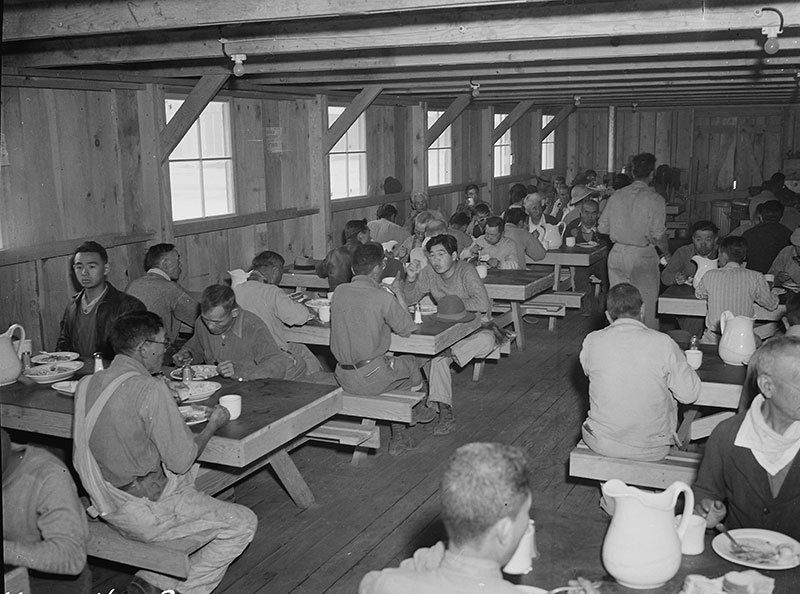
The Japanese who liberated the Dachau Concentration camps complex..
The soldiers were from the 442nd Infantry Regiment an infantry regiment of the United States Army. The unit is most known as a fighting unit composed almost entirely of second-generation American soldiers of Japanese ancestry aka Nisei.
Although some of them had been in internment camps themselves, after the attack on Pearl Harbor by the Japanese Imperial army, they still volunteered for the US army, and even though many of their family members remained in internment camps these soldiers fought valiantly and were in fact one the most decorated units in the US Army.
The Nisei 522nd Field Artillery Battalion was organized as part of the 442nd Regimental Combat Team; but towards the end of the war, the 522nd became a roving battalion, helping out wherever they were needed.
They had the distinction of liberating survivors of the Dachau concentration camp system, from the Nazis on April 29, 1945.
Here are just some of their testimonies.
Technician Fourth Grade Ichiro Imamura: “I watched as one of the scouts used his carbine to shoot off the chain that held the prison gates shut …. They weren’t dead, as he had first thought. When the gates swung open, we got our first good look at the prisoners. Many of them were Jews. They were wearing striped prison suits and round caps. It was cold and the snow was two feet deep in some places. There were no German guards. The prisoners struggled to their feet …. They shuffled weakly out of the compound. They were like skeletons – all skin and bones ….”
Scouts from the 522nd were among the first Allied troops to release prisoners from the Kaufering IV Hurlach satellite camp, one of nearly 170 such camps, where more than 3,000 prisoners were held.

Joseph Ichiuji testimonial: “As we came around the way, there were a lot of Jewish inmates coming out of the camp, and I heard that the gate was opened by our advanced scouts. They took a rifle and shot it. I think it was a fellow from Hawaii that did that. I think it was a Captain Taylor, Company B was one of them, but another person from Hawaii, he passed away. They opened the gate and all these German, I mean, Jewish victims were coming out of the camp”
Minoru Tsubota testimonial: “Then, when we finally opened the Dachau camp, got in, oh those people were so afraid of us, I guess. You could see the fear in their face. But eventually, they realized that we were there to liberate them and help them”
Minoru Tsubota testimonial: “They were all just skin and bones, sunken eyes. I think they were more dead than they were alive because they hadn’t eaten so much because, I think, just before we got there the S.S. people had all pulled back up and they were gone. But, we went there, and outside of the camps there were a lot of railroad cars there that had bodies in them. I had the opportunity to go into the camp there, but you could smell the stench. The people were dead and piled up in the buildings, and it was just unbelievable that the Germans could do that to the Jewish people. I really didn’t think it was possible at all actually”
Sources
https://www.worldcat.org/title/from-hawaii-to-the-holocaust-a-shared-moment-in-history/oclc/31954150

Donation
I am passionate about my site and I know you all like reading my blogs. I have been doing this at no cost and will continue to do so. All I ask is for a voluntary donation of $2, however if you are not in a position to do so I can fully understand, maybe next time then. Thank you. To donate click on the credit/debit card icon of the card you will use. If you want to donate more then $2 just add a higher number in the box left from the PayPal link. Many thanks.
$2.00






 and the censorship statutes, conviction of which carried the death penalty. She pleaded not guilty and was released on the same bail.On July 28, 1944, a plea bargain was made between the U.S. Attorney’s Office and Dickinson in which the espionage and Trade Act indictments were dismissed and she pleaded guilty to the censorship violation and agreed to furnish information in her possession concerning Japanese intelligence activities.
and the censorship statutes, conviction of which carried the death penalty. She pleaded not guilty and was released on the same bail.On July 28, 1944, a plea bargain was made between the U.S. Attorney’s Office and Dickinson in which the espionage and Trade Act indictments were dismissed and she pleaded guilty to the censorship violation and agreed to furnish information in her possession concerning Japanese intelligence activities.












You must be logged in to post a comment.